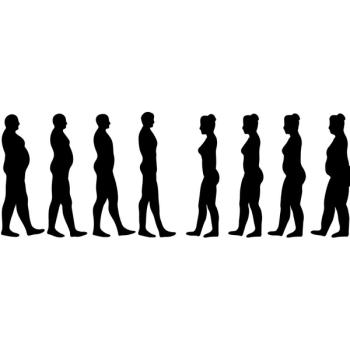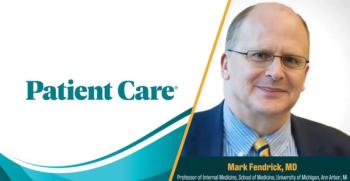
We Need to Shift the Modality Mix for Colorectal Cancer Screening, Says Primary Care Clinician and Researcher Mark Fendrick, MD
With a population goal of having 80% to 90% of age-eligible Americans screened for colorectal cancer, colonoscopy can not be the initial test for everyone, Fendrick emphasizes.
The comment, from Mark Fendrick, MD, was made during a recent interview with Patient Care. The context was a discussion of how to ensure all people who are eligible for
A primary barrier no longer in the way for anyone is the cost of screening. Under the Affordable Care Act, Fendrick reminded listeners, CRC screenings recommended by the
Expanded use of the stool-based tests available to perform CRC screening at home is pivotal to moving toward that goal, Fendrick emphasized. He goes in to more detail in the video interview above.
The following transcript has been lightly edited for style and clarity.
Patient Care: What are your thoughts on getting more eligible adults to initiate CRC screening?
Mark Fendrick, MD: Anyone in your audience in primary care knows that we are tasked with doing too much in too little time. That’s why it's so important to prioritize the cancer screenings that are age- and gender-appropriate—especially colorectal cancer screening.
The good news is that all of the screening modalities recommended by the US Preventive Services Task Force—including colonoscopy and stool-based tests like stool DNA—must now be provided at no cost to patients. Before the Affordable Care Act, one major barrier was financial. Patients would say, “Not only do I not want a colonoscopy, but I definitely don't want to pay $2,000 out of pocket for one.” That obstacle is gone.
And there’s more good news. Thanks to significant advocacy federal regulation that went into effect in 2023 now requires insurers to cover not just the initial screening test but also any necessary follow-up colonoscopy, at no cost to the patient. That means when I talk to a patient who’s leaning toward a stool-based test but is worried about follow-up costs—because, say, their neighbor had to pay $1,000 for a diagnostic colonoscopy—I can confidently tell them that barrier has been removed.
Of course, some patients still prefer colonoscopy, and that’s fine. But there are many who don’t want to deal with the prep, or who live far from a specialist, work night shifts, don’t have transportation, or lack childcare. We’re seeing a slow but steady shift in screening patterns—away from initial colonoscopy and toward stool-based testing.
One more important point is that colonoscopy appointment slots are finite. If we want to reach a population-level screening goal of 80% to 90% of age-eligible individuals, colonoscopy simply can’t remain the primary initial screening modality. There just aren’t enough procedural slots, especially when you factor in demand for colonoscopy for other indications: inflammatory bowel disease, GI bleeding, urgent cases—and, ideally, for follow-up after a positive stool-based screening.
We've done some fascinating modeling work with Exact Sciences, and the data are compelling. If we want to screen a majority of the population without significantly increasing the number of trained colonoscopists—which isn't realistic anytime soon—we need to reserve colonoscopy slots for follow-up. That means using more stool DNA and FIT testing as the first step, and fewer initial colonoscopies.
This approach leads to multiple wins. First, more people get screened. Second, more people complete the full screening process, including necessary follow-up. Most importantly, more cancers are prevented, and more are caught at an early stage.
And unusually, this is a win across the board: patients benefit through less invasive and more accessible options; health systems deliver more efficient, higher-value care; and payers see lower total costs, since cancers are prevented or treated earlier—when treatment is less expensive.
Newsletter
Enhance your clinical practice with the Patient Care newsletter, offering the latest evidence-based guidelines, diagnostic insights, and treatment strategies for primary care physicians.





















































































































































































































































































